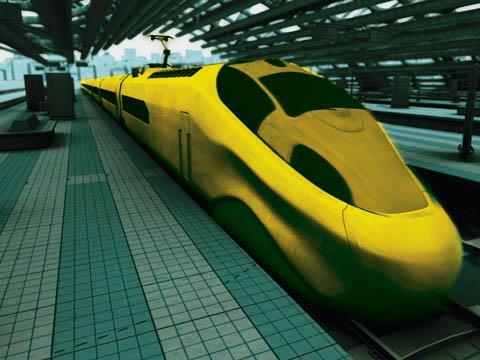
UK: A vision of journey times from London of just 2 h 16 min to Glasgow, 1 h 06 min to Manchester and 46 min to Birmingham was painted by Network Rail Chief Executive Iain Coucher on August 26, when he unveiled the findings of a study by the infrastructure company into ways of providing sufficient capacity to meet accommodate the projected growth in demand for rail transport over the next 30 to 50 years.
The year-long review concluded that 'the best answer' is the construction of a high speed network which would largely duplicate the current West Coast Main Line. Coucher said the study was 'a serious piece of work' which would 'inform the public policy debate', but it was 'not meant to be definitive'. It is intended to feed into the planning of a London - Birmingham route currently being undertaken by the High Speed 2 development company established by the government last year.
The UK network is currently carrying 1·3 billion passengers a year, and this is expected to increase to 2·5 billion as a result of economic development and modal shift from road and air. Coucher pointed out that demand had not fallen significantly as a result of the current economic downturn, and emphasised that the growth projections were 'conservative'.
Head of Route Planning Richard Eccles said NR was currently investing in a number of major expansion projects, but needed to ensure that such investment was compatible with longer-term requirements to make best use of resources. The study therefore looked at four main corridors radiating from London to:
- Yorkshire, northeast England and Scotland;
- the East Midlands;
- West Midlands, northwest England and Scotland;
- West of England and South Wales.
Of these, the northwestern route was the greatest priority, as the existing WCML is expected to run out of capacity at its southern end by around 2020, despite the recent £9bn upgrading programme. After looking at various options, NR concluded that building a new line all the way to Scotland offered bigger benefits than a shorter route serving only Birmingham and Manchester. The preferred option is a trunk line from central London to Preston and Glasgow with branches to Birmingham, Manchester, Liverpool and Edinburgh.
Using unit costs for civil engineering and E&M works based on those for High Speed 1 between London and the Channel Tunnel, NR estimates the cost of constructing around 1 200 km of double-track railway at £15bn, plus £5bn for land acquisition, planning and project management. Adding the government's 'optimism bias' for public sector works would bring the total cost to £34bn, or around £44m per route-km. This compares to £13m/km for LGV Est in France or £50m/km for HS1. Using Department for Transport standards for time savings and other benefits, NR estimates the investment would have a benefit:cost ratio of around 1·8:1.
NR suggested that the new line should not run via Heathrow Airport, because of the time penalty for through passengers, but suggested that a spur could be built to take direct services from the north. A direct connection with HS1 to allow through services to Europe was ruled out, because the extra passengers attracted would not meet the cost of building the link in central London; NR believed that a 'convenient interchange' would attract around 500 000 passengers/year, whereas through trains would only add a further 300 000.
The study also ruled out building a trans-Pennine extension from Manchester to serve Leeds, as the potential journey time would offer little saving compared to the best now achievable via the East Coast Main Line. Coucher said serving Leeds via Manchester would also damage the case for building a second high speed corridor from London to Sheffield, Leeds and Newcastle. This would be the subject of a separate study, while a report into options for enhancing trans-Pennine rail links is to be published in December.
Eccles suggested that the new routes should be built to international standards, allowing the use of standard equipment. This effectively ruled out the French model of operating through trains onto the existing network because of the smaller loading gauge on existing lines in the UK. Stations would be designed for 400 m trains, but initially 10-car trains at 3 min headways would provide an extra 9 000 seats per hour in and out of London. Shorter trains would operate direct links from Manchester and Birmingham to Glasgow and Edinburgh.
NR believes that a major contribution to the benefits would come from freeing capacity on the existing network for additional commuter and freight trains. In addition, it says new inter-city routes could be developed to serve markets that are not currently being fully exploited for lack of capacity, citing towns such as Telford and Nuneaton.
- Railway Gazette International is the official media partner of the Steer Davies Gleave High Speed Rail Summit to be held in London on September 9.

















